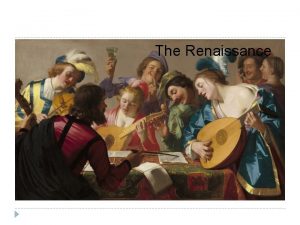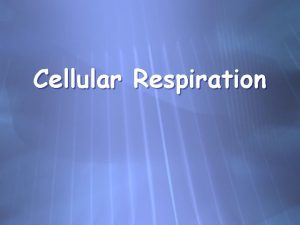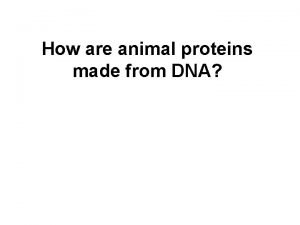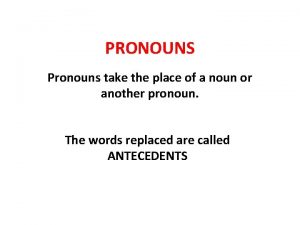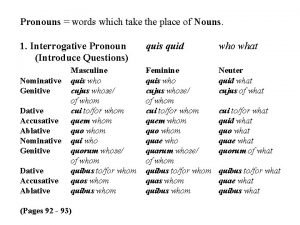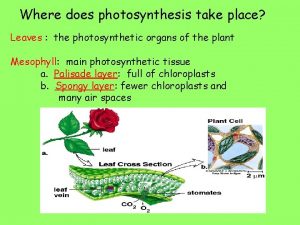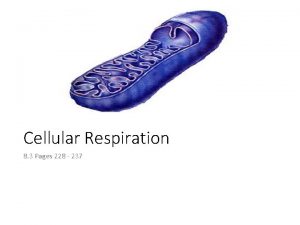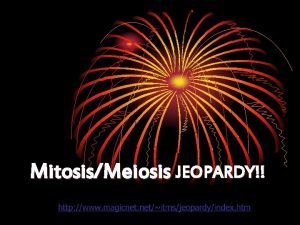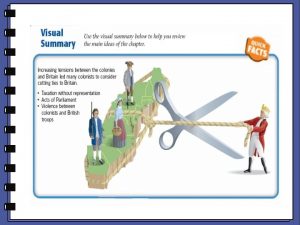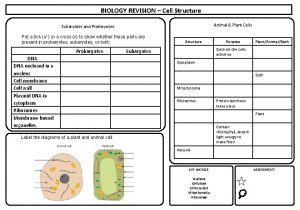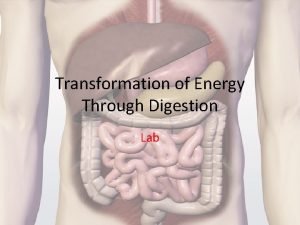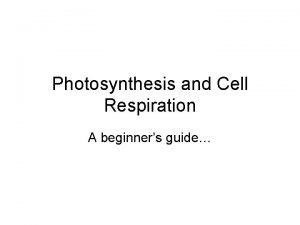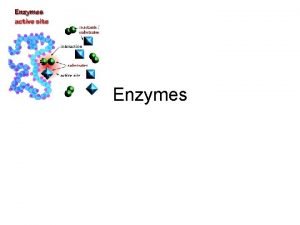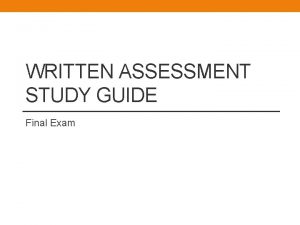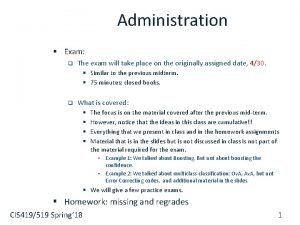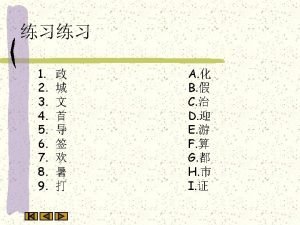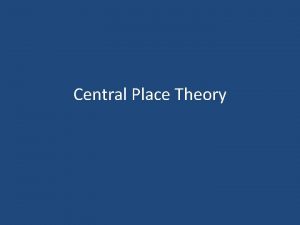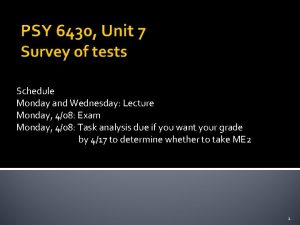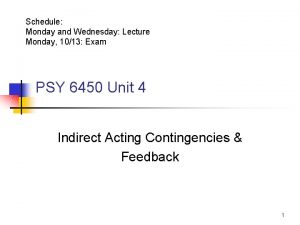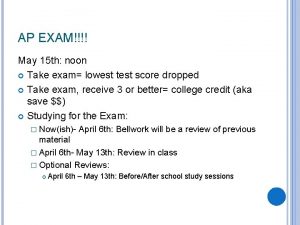Exam Written exam will take place on Monday
























- Slides: 24

Exam Written exam will take place on Monday, June 17, 2019, at 9 -10. 30 in the room 1. 40 After written exam one should sign up for an oral exam, which will take place on June 18 -19, 2019, in the room 4. 61.

Learning and memory Route recall, by licensed London taxi driver, from Hyde Park to Primrose Hill, results in PET activation of the right hippocampus. Maguire et al. Learning to find your way: a role for the human hippocampal formation. Proc R Soc London B, 1996.

Learning and memory The central problem of the mind, if you will, or the nervous system, is this: when an animal learns something, it can do something different than it could before, and its brain cell must have changed too, if it is made out of atoms. In what way is it different? We do not know where to look, or what to look for, when something is memorized. We do not know what it means, or what change there is in the nervous system, when a fact is learned. This is a very important problem which has not been solved at all. The Feynman Lectures on Physics, Volume I, California Institute of Technology (Caltech), 1963. Definition of learning: Learning is an adaptive change in behavior caused by experience Definition of memory: Memory is the storage and recall of previous experiences

In Search of the Engram Jerzy Konorski (1903 – 1973) Donald Hebb (1904 – 1985) Coined the term neural plasticity and developed theoretical ideas regarding it. They were similar to those proposed soon after by Donald Hebb. Lashley was trying to find a specific location that stored a memory. He started to doubt that memory center exists. „When an axon of cell A excites a cell B and repeatedly or persistently takes part in firing it, some growth process or metabolic change takes place in one or both cells such that A's efficiency, as one of the cells firing B, is increased". "Neurons that fire together wire together. "

Types of learning and memory Learning – adaptive change in behavior caused by experience Memory – storage and recall of previous experiences There are two types of long term memory: Implicit memory (or nondeclarative memory) - how to perform something Explicit memory (or declarative memory) - factual knowledge of people, places, and things, and what these facts mean. Explicit memory can be further classified as episodic (a memory for events and personal experience) or semantic (a memory for facts).

Habituation A bottom view of Aplysia illustrates the respiratory organ (gill), which is normally covered by the mantle shelf. The mantle shelf ends in the siphon, a fleshy pipe used to expel seawater and waste. A tactile stimulus to the siphon elicits the gill-withdrawal reflex. Repeated stimuli lead to habituation. Weak stimuli give rise to short term habituation, lasting from minutes to hours. A more powerful and long lasting stimulus will result in a long term habituation that can remain for weeks. A. The observed behavior. B. Experimental setup and recordings showing shortening of sensory action potential and decrement of motoneuron EPSP with repeated stimulation. C. (Left) Simplified model of the synapse to account for habituation by depression of calcium current. (Right) Changes in structure of synaptic terminal during long-term habituation leading to functional disconnection.

Sensitization of the gill withdrawal reflex of Aplysia. Noxious stimulation in a form of strong electrical shock delivered to the head or tail, leads to an enhacement of the relfex response. A. Experimental setup and the observed behavior. B. (Left) Recordings of gill response amplitude showing habituation to sensory input and sensitization by stimulation of nociceptors from the head. (Right) Broadening of sensory action potential and facilitation of the motoneuron EPSP during sensitization of the gill reflex. C. (Left) Simplified model of the synapse to account for sensitization (reduced K currents during the impulse and increased Ca 2+ entry). (Right) Structural changes, i. e. , increase of size and number of active zones, underlying longterm sensitization.

Short and long term sensitization Short term sensitization The mechanism for short term sensitization is that particular ion channels are affected in such a manner that more calcium ions will enter the nerve terminal. This leads to an increased amount of transmitter release at the synapse, and thereby to an amplification of the reflex. Long term sensitization The stronger stimulus will give rise to increased levels of the messenger molecule c. AMP and thereby protein kinase A. These signals will reach the cell nucleus and cause a change in a number of proteins in the synapse. The final result is that the shape of the synapse can change and thereby create a long lasting increase of synaptic function. In contrast to short term memory, long term memory requires that new proteins are formed.

Associative learning (classical conditioning) Associative learning is the process by which an association between two stimuli or a behavior and a stimulus is learned The siphon withdrawal reflex also exhibits classical conditioning when a weak stimulus to the siphon or mantle shelf (the conditioned stimulus or CS) is paired with a shock to the tail (the unconditioned stimulus or US). The mechanism is similar to sensitization. gill siphon or mantle Tail shock (the US) produces greater facilitation of the monosynaptic EPSP from a sensory to a motor neuron if the shock is immediately preceded by spike activity in the sensory neuron than if it occurs without spike activity. When the tail shock and mantle stimulus (CS+) are paired, the response to mantle stimulus is increased.

Conditioning and reactions Conditioning Reaction Classical conditioning of Aplysia US: shock to the tail CS: weak stimulus to the mantle Full gill withdrawal by the weak CS Classical conditioning (Pavlovian, type I) - change of behavior depending on association of stimuli US: taste of food CS: ringing a bell Salivation to bell alone Operant conditioning (instrumental, type II, discovered by Konorski) – change of behavior depending on consequences (reward or punishment) Behavior (intentional action e. g. response in a class) -> Consequences (reinforcement given afer desired action, e. g. , good mark) -> Increased likelihood to respond again

Conditioning in economics Many modern day advertisers use classical conditioning in some way. The ads show products as CS, pairing them with images that are designed to elicit positive emotional, or other cognitive, reactions. As a result the viewers of the ad will buy more of this product.

Operant conditioning of a single neuron in the motor cortex of an awake, behaving monkey. A Meter registering rate of impulse firing; when firing rate exceeded a preset level, dial become illuminated and few drops of fruit juice was given. B. Records of impulse activity. C. Graph of average firing rate during successive experimental periods. D. Relation to muscle activity.

Aversion learning takes place when a subject associates taste of certain food with symptoms caused by a toxic, spoiled, or poisonous substance. We become averse to the taste of something that causes nausea, sickness, or vomiting. Neural pathways mediating taste aversion learning in the mammal. Aversion learning requires a site at which the taste and aversive pathways meet, and the nucleus of the solitary tract is a likely candidate.

Complex learning Imprinting Konrad Lorentz with ‘his’ goslings. The goslings imprinted on Lorenz as he was the first moving stimuls they saw after hatching. Latent learning Observational learning Latent learning is not immediately expressed in a response. Rats who previously could explore the maze learned to find food faster than another group of rats that had not previously explored the maze. Observational learning is learning that occurs through observing the behavior of others. In 40 -ies one tit (sikorka) had learned to steal the cream from the top of milk bottle delivered to the doors in London. Over a 12 years period cream stealing was common in whole Great Britain.

Hippocampus Hippocampal circuits are organized in a highly distinctive manner. It contains stereotyped micro- and local circuits. The main parts are: entorhinal cortex (EC), dentate gyrus (DG), hippocampus (CA 3, CA 1), subiculum (Sub).

Long term potentiation (LTP) First experimental demonstration of long term potentiation in the anastethized rabbit (1973). High frequency tetanic, 20 Hz stimulation was applied to the perforant fibers (1) for 15 seconds and was repeated at times marked by arrows in the graph. The test was a single shock at various intervals after that. The amplitude of the synaptic response (EPSP spike) of the dentate cell grew to a much greater amplitude. The time course of the increase over a period of 6 hours is plotted. In dentate cells LTP lasts for several hours and could be demonstrated over periods of days or weeks.

LTP properties In general, properties of LTP fit closely into Hebb’s and Konorski’s original concepts. In the experiments on hippocampus, some additional properties were found. A. Weak repetitive stimulation of one pathway may be not sufficient to elicit LTP. B. For weak inputs to be potentiated they must be paired with strong inputs. C. Strong repetitive stimulation of one pathway can be sufficient to elicit LTP in that pathway, but not in unstimulated pathway.

From Hebbian rule to spike-timing-dependent plasticity A Hebbian rule “those who fire together, wire together” might incorrectly suggest that if two neurons fire exactly at the same time, their connection gets stronger. Experiments that stimulated two connected neurons with varying interstimulus asynchrony showed that the presynaptic neuron has to fire just before the postsynaptic neuron for the synapse to be potentiated. If an input spike tends, on average, to occur immediately after an output spike, then that particular input gets weaker. This phenomenon is called spike-timing-dependent plasticity (STDP). In typical STDP, causal activity results in long-term potentiation (LTP), while acausal activity elicits long-term depression (LTD). At some cortical synapses, the temporal window for LTD (dashed gray line) is extended

LTP: postsynaptic or presynaptic locus? LTP was elicited neither by postsynaptic depolarizing current alone nor in response to synaptic input under voltage clamp (no depolarization). Only stimulation paired with postsynaptic depolarization resulted in LTP. It suggests that LTP is based on changes in postsynaptic structure.

Postsynaptic LTP mechanism Mechanisms underlying LTP are depenedent on NMDA receptors. (NMDAR). These receptors are blocked by Mg 2+ ions at resting membrane potentials. Depolarization removes the block and allows Ca 2+ to pass through the channel and enter the cell.

Evidence for a presynaptic locus C. Analysis of quantal mechanism at synapse in the hippocampus. The histogram of numbers of quantal events (excitatory postsynaptic currents) is different before and during LTP. There is shift towards higher values signifying enhanced presynaptic vesicle release. It suggests that both presynaptic and postsynaptic factors contribute to LFP.

LTP mechanism – early phase Long-term potentiation has a transient early phase (lasting 1 -3 hours) and a consolidated late phase (lasting 24 hours or more). When the postsynaptic membrane is depolarized by the actions of the AMPA receptor-channels, the depolarization relieves the Mg 2+ blockage of the NMDA channel. This allows Ca 2+ to flow through the NMDA channel. The resulting rise in Ca 2+ in the dendritic spine triggers calcium-dependent kinases which phosphorylate non-NMDA receptor-channels and increases their sensitivity to glutamate. Retrograde messengers act on presynaptic terminal to initiate an enhancement of transmitter release.

Late-phase LTP With repeated trains the Ca 2+ influx recruits the c. AMP-PKA-MAPK-CREB signaling pathway and leads to synthesis of new m. RNA, which causes structural changes and forming of new synapses.

Change in synaptic strength can store memory Three aspects of the circuit give it the ability to store and retrieve patterns. 1. Each of the input cell (a to f) makes a sufficiently strong connection to activate postsynaptic cell. 2. Each output cell (z to u) sends an axon collateral that makes an excitatory connection with itself and the other five output cells. 3. Each of the 36 connections are modifiable through an LTP-like mechanism. Repeated presentations of the pattern will lead to output which is amplified version of the input. The “memory” for the pattern is not stored in any one synapse or one cell. Rather, it is distributed throughout the network at multiple sites. If a partial input pattern is presented, e. g. , {101000}, the network can complete the pattern and produce an output that is approximately full input pattern {303022}. This property arises from the distributed representation of the memory within the circuit.
 Take a bus or take a train
Take a bus or take a train Important events of the renaissance
Important events of the renaissance Cask of amontillado setting
Cask of amontillado setting Where does cellular respiration take place
Where does cellular respiration take place Where does translation take place
Where does translation take place Alive y&f
Alive y&f Pronouns take the place of
Pronouns take the place of Pronouns take the place of
Pronouns take the place of Where was the setting of beowulf
Where was the setting of beowulf Where does photosynthesis take place
Where does photosynthesis take place The 3 apparitions in scene 1 leave macbeth feeling
The 3 apparitions in scene 1 leave macbeth feeling Pronouns take the place of
Pronouns take the place of The landlady questions
The landlady questions Marriage is a private affair plot
Marriage is a private affair plot Where does glycolysis take place
Where does glycolysis take place Meiosis jeopardy
Meiosis jeopardy Where did the townshend act take place
Where did the townshend act take place Where does the 100 take place
Where does the 100 take place Animal biology revision
Animal biology revision Caesura example in beowulf
Caesura example in beowulf Energy transformation during digestion
Energy transformation during digestion What is e
What is e Photosynthesis equation
Photosynthesis equation Most reactions take place in a number of
Most reactions take place in a number of Where did the french and indian war take place
Where did the french and indian war take place

